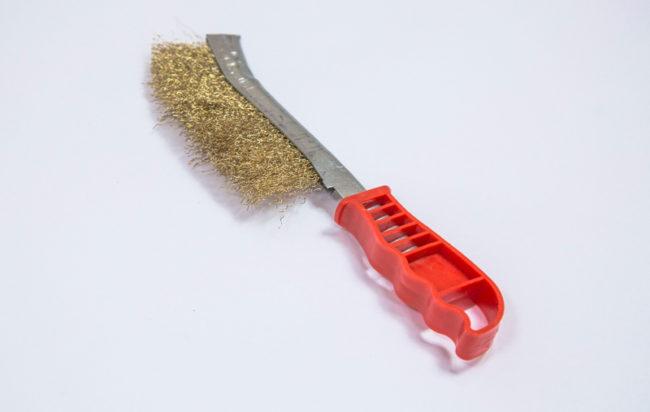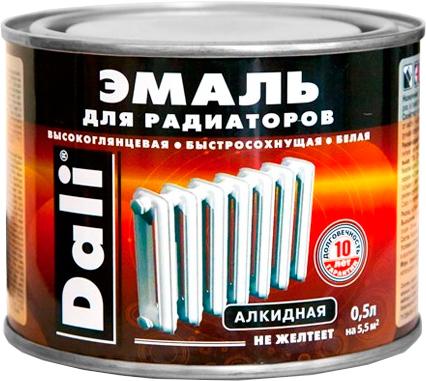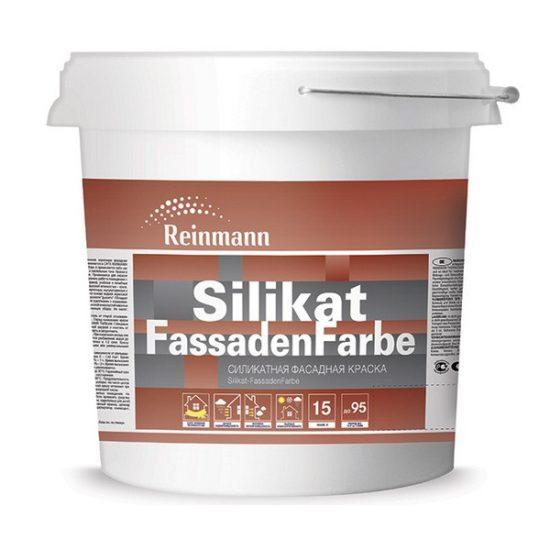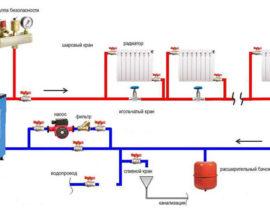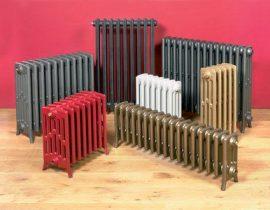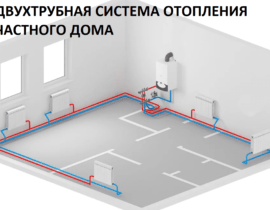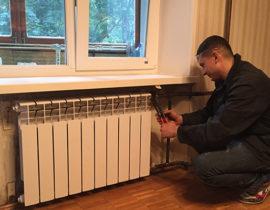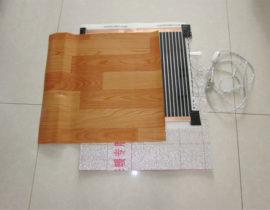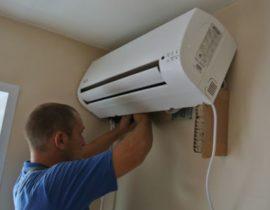Over time, heating batteries can lose their neat appearance. Often the paint on them cracks, slips and ugly rust spots appear. Of course, no one forbids simply putting in new ones, but it is much easier to restore the appearance of this interior detail using ordinary painting.
Content
Importance of preparation
As in any serious repair business, the main focus to begin with should be given to proper preparation for this process. Otherwise, the result may turn out much worse than expected.
Timing
Preparatory procedures in time last even longer than the painting itself.
The first thing to remember is that all radiator painting work should be carried out after the end of the heating season. Otherwise, it will be very difficult to achieve an excellent result.
If this is not possible, then at least turn off the hot water. You can turn to the masters of the housing office for help. When the batteries are noticeably cool, it's time to start working.
cleaning
 All surfaces must be free of dust and grease prior to painting. Radiators are no exception.
All surfaces must be free of dust and grease prior to painting. Radiators are no exception.
To eliminate dust, you can:
- Use dry cleaning.To do this, you need a hand vacuum cleaner or a regular brush / rag / sponge.
- By wet cleaning with water and sponge.
Fat accumulated on the battery must also be cleaned. In order to get rid of it, it is enough to use the usual dishwashing detergent and a sponge. After the battery has been washed, you need to leave it to dry.
Removing peeling paint
There are several ways to clean the radiator from paint that has peeled and peeled off over time.
Brush
With a metal scraper, it is quite possible to remove old paint. But this is a very laborious process and it will take a long time. Of course, in the absence of an alternative, this method is quite useful.
Removing all coverage is not optional. It will be enough to get rid of cracked areas.
Chemicals
Using special chemical compositions, it is very easy to wash off the old paint from the radiator.
There are several types of such solvents:
- Gels and pastes. Such compounds must be applied directly to the battery with a brush (with natural bristles). Then you need to leave them on the radiator for the required time. For different means, it can
 vary from a few minutes to several hours. To make the effect even better, you can cover the battery with a chemical composition with a polyethylene film. When the paint softens, all you need to do is remove it from the battery with a spatula or brush.
vary from a few minutes to several hours. To make the effect even better, you can cover the battery with a chemical composition with a polyethylene film. When the paint softens, all you need to do is remove it from the battery with a spatula or brush. - Sprays and aerosols. Such substances are very convenient to apply to the battery, even to the most inaccessible areas.After a few minutes - an hour, they begin to actively act and soften the paint. After that, you can simply remove it with a brush.
Working with chemicals is not safe. Due to evaporation, procedures should be carried out in a ventilated room. In the course of work, it is imperative to use goggles and gloves, if possible, a protective respirator. Before use, it will not be superfluous to make sure that the metal from which the radiator is made will not react with the chemical composition, otherwise the surface of the battery may be damaged.
Padding
When the old paint has been successfully peeled off the surface, the radiator should be well primed. This process is used to eliminate small bumps, scratches and cracks. Batteries made of steel or copper are best treated with sandpaper, and cast iron with an ordinary metal brush. Then the battery needs to be degreased again and proceed to the primer itself.
The composition for the primer must combine the following characteristics:
- Designed for metal surfaces.
- Protect against rust.
- Be paint compatible.
Painting
The painting process is actually not particularly difficult. But buying the first paint that comes to hand will still not be enough. There are special requirements for paintwork for batteries
Paint requirements are as follows:
- Thermal resistance. It must withstand temperatures up to 100aboutFROM.
- Adhesion. The paint should hold and not peel off when the temperature changes.
- Long lasting color.
- Anti-corrosion. Such components provide protection to the radiator housing.
- No harmful ingredients.
Battery Paints
There are several paint types suitable for radiators.
Serebryanka
Such a coloring composition is a mixture of aluminum powder and varnish. The paint can be applied both over the primer and over the old coating. But the composition smells sharp and unpleasant. Therefore, the room must be ventilated.
Silver can be bought ready-made, or you can make it yourself. To do this, mix aluminum powder and varnish in a ratio of 2 to 5. It is important to know that aluminum powder is explosive. Therefore, you should not resort to this method in homes with small children or flammable structures.
Acrylic
Acrylic paints have some advantages:
 They do not smell and do not contain harmful substances, so they are completely safe to use.
They do not smell and do not contain harmful substances, so they are completely safe to use.- Dry quickly. At temperatures of 18-25 degrees, the coating dries within half an hour.
- They are resistant to various external influences and are water-repellent.
- Resistant to high temperatures and temperature extremes.
- Retain a decent appearance for 7 years.
Alkyd
These paints also have advantages:
- They have excellent heat resistance and are suitable for painting radiators.
- More durable than acrylic.
- They contain anti-corrosion agents.
- They fit great.
As for their shortcomings:
- Since their base is not water, the solvent has a very unpleasant pungent odor that can last for a whole day.
- Compared to acrylics, they dry rather slowly.
- You can use such compounds only in ventilated rooms so that the smell does not create problems.
- They do not retain their original color for too long.
silicate
These paints are great for high temperatures. In addition, when choosing such a paint, the battery can not be pre-primed.They are durable and adhere well to the surface. A noticeable drawback of such paints is a sharp unpleasant odor.
Hammer
This unusual type of paint got its name because when it is processed, the surface is rough. They perfectly mask the imperfections of the surface of the batteries. You can safely to choose owners of old Soviet cast-iron batteries.
How to paint
Of course, flat radiators are easier to paint. However, most batteries do have fins. If possible, you can remove the batteries and paint them. Otherwise, with the help of special tools, you can cope with this task.
For painting you will need:
A brush with a curved handle is a very handy tool. It will help to color even the most hard-to-reach places.
A brush with a curved handle allows you to reach the most inaccessible areas of the battery.
Coloring process
Step by step guide to coloring batteries:
- Turn off the heating and ventilate the room. It is worth waiting until it gets cold so that the paint does not drip. Also make sure the room is well ventilated. If you need to open several windows with the heating turned off, then such a temporary cold snap is still better than the possible health problems associated with a toxic coloring composition.
- Clean the area around the radiator. It's best to use a vacuum cleaner to remove dust, hair, and anything that might stick to the paint. Then put any coating that is at hand on the floor to prevent drips and splashes of paint.
- Apply (or spray) the paint, making sure that the layer is even. First of all, you need to paint the batteries inside, and then move on to the outside. Sections should be painted from top to bottom, otherwise the paint will fall on already painted parts. If possible, it is best to avoid "overloading" the brush. If there is too much coloring composition on the brush, this will lead to drops and lumps.
- Wait, if necessary, apply another layer.
You must wait until the paint is completely dry. It is possible that the radiator may need another coat of paint after it dries, but it depends entirely on the application process, paint and radiator. Most often, two coats are required for uniform painting. At the same time, two thin layers are better than one thick one. The second layer of paint is applied only after the previous one has completely dried.
The drying time of the paint is always indicated on the label.
aluminum batteries
Unfortunately, it is almost impossible to paint batteries made of aluminum or bimetal at home. Such products are painted in factories using a special powdered dye. It is applied using special equipment, and it is impossible to repeat this procedure at home.
Questions and answers
It is possible, but the color must necessarily match the characteristics of the type of paint.
Yes, but also not with ordinary, but with special heat-resistant paint.
On hot surfaces, the unpleasant smell of some paints is noticeably enhanced. Therefore, it is better not to carry out such repairs during the heating season.
Shooting is not required, but recommended. Since the appearance of the adjacent wall will suffer from spraying.
Batteries constantly heat up and cool down, which weakens the paint.
Video tips for painting heating radiators

